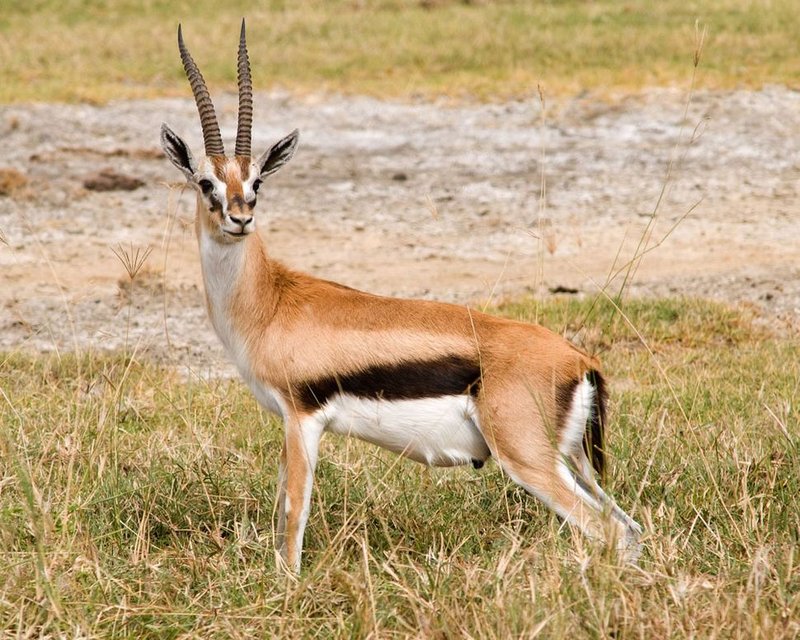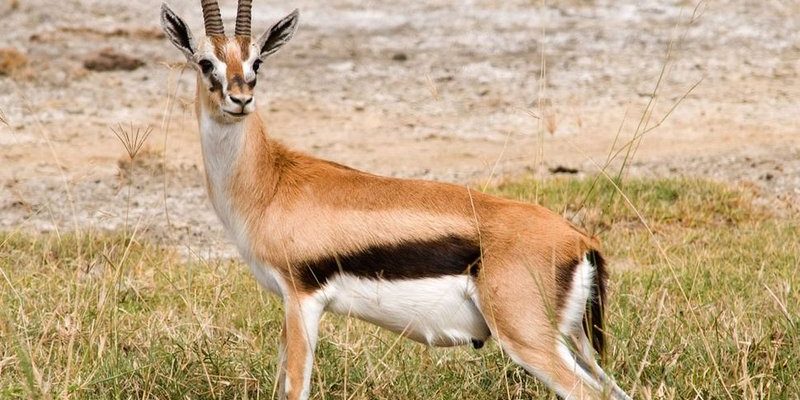
These animals are not just known for their beauty; they also play a crucial role in their ecosystem. Gazelles contribute to the balance of their habitats by grazing on grasses, helping to maintain healthy plant life. So, let’s dive into ten fascinating facts about gazelles that will not only spark your interest but might just make you appreciate these incredible animals even more!
1. Diverse Species
You might be surprised to learn that the term “gazelle” doesn’t refer to just one type of animal. In fact, there are around 15 species of gazelles, including the well-known Thomson’s gazelle and the Grant’s gazelle. Each species has unique features adapted to their specific habitats. For instance, the Thomson’s gazelle is smaller and more agile, making it an expert escape artist. It’s often found in open grasslands and savannahs, where it can quickly outrun predators.
On the other hand, the Dama gazelle is larger and more endangered, mainly residing in North Africa’s shrublands. The differences don’t stop at size and habitat; gazelles also vary in color, from the reddish-brown of the Thomson’s to the pale, cream tones of the Dama. Each species reflects the diverse environments they thrive in, showcasing the adaptability of these beautiful animals.
2. Speedy Sprinters
Let me explain just how fast these creatures can go. Gazelles are known for their incredible speed, reaching up to 60 miles per hour (about 97 km/h) in short bursts. That’s faster than a race car on some city streets! This speed isn’t just for show; it’s a vital survival trait. Gazelles’ long, slender legs and powerful muscles allow them to escape from predators like cheetahs and lions.
But speed isn’t their only defense. Gazelles also use their remarkable agility to zigzag while fleeing, making it difficult for predators to catch them. Watching a gazelle sprint away is like watching a ballet dancer performing a breathtaking leap—graceful and powerful all at once. You might even find yourself holding your breath as they dodge and weave to safety!
3. Unique Social Structure
Have you heard about the social lives of gazelles? They often form groups called herds, which can consist of anywhere from a few to over a hundred individuals. This social structure helps them stay safe from predators. By staying together, gazelles can watch for danger and alert each other when they sense something is off.
Interestingly, gazelle herds can be organized in different ways. For example, some herds are made up of males, while others consist of females and their young. During the breeding season, males will compete for the attention of females, displaying impressive behaviors like bounding and showcasing their agility. It’s like a natural beauty pageant, where the best sprinter wins the heart of the lady gazelle!
4. Grazing Habits
Here’s the thing: Gazelles are herbivores, which means their diet consists mostly of plants. They primarily graze on grasses and leafy shrubs, which gives them the energy to sustain their high-speed lifestyle. Unlike some animals that chew their food for a long time, gazelles prefer to eat small amounts of grass continuously throughout the day. This behavior is similar to snacking—great for keeping their energy levels up!
Moreover, gazelles have a unique way of coping with food scarcity. When resources are limited, they can move to different areas in search of greener pastures. This adaptability allows them to thrive in harsh environments, ensuring their survival even when conditions get tough. Honestly, it’s pretty impressive how these animals can find food in such challenging habitats.
5. Communication Skills
You might be wondering how gazelles communicate with each other, especially when they’re in a herd. They use a mix of vocalizations, body language, and even facial expressions to convey messages. For example, when a gazelle sees danger, it might make a specific noise or raise its head high to alert the rest of the herd.
Their vocalizations range from simple bleats to more complex sounds, allowing them to convey different messages based on the situation. Imagine being part of a secret club where everyone understands the unspoken rules—gazelles seem to have their own version of that communication system!
6. Natural Predators
Despite their speed and agility, gazelles face threats from various predators. Large carnivores like lions, cheetahs, and hyenas often hunt them. Gazelles have evolved to be aware of their surroundings, using their keen eyesight to spot potential threats from afar. They rely on their instincts and teamwork within their herds to stay safe.
When a predator approaches, gazelles don’t just scatter randomly. Instead, they often work together, keeping an eye on the predator while trying to escape. It’s a fascinating dance of survival, showcasing their ability to work as a cohesive unit despite the danger lurking nearby.
7. Lifespan and Reproduction
Now, let’s talk about how gazelles raise their young. Female gazelles typically give birth to one calf after a gestation period of about 6 months. Calves are surprisingly quick to adapt—they can stand and run within a few hours of being born! This rapid development is essential for their survival, as they need to keep up with the herd to avoid predators.
Gazelles usually have a lifespan of about 10 to 15 years in the wild, depending on species and environmental conditions. In protected areas, some gazelles can live even longer, reaching upwards of 20 years. The bond between mother and calf is strong, as she will care for and protect her young until they’re ready to join the herd. It’s a heartwarming aspect of their lives that adds depth to their existence.
8. Habitat and Distribution
You might be curious about where to find these graceful creatures. Gazelles inhabit a range of environments, from open savannahs to arid deserts. They are most commonly found in Africa, but some species also range into parts of Asia. Their adaptability allows them to thrive in various climates, always seeking areas where they can find food and shelter.
Interestingly, their habitats play a significant role in their behavior. In areas with lush vegetation, gazelles are more social and form larger herds, while in harsher environments, they tend to be more solitary. This flexibility illustrates how gazelles have evolved to cope with the challenges of their surroundings.
9. Conservation Status
While gazelles are truly remarkable animals, many species face threats and are classified as vulnerable or endangered. Habitat loss due to human development, hunting, and climate change have impacted their populations significantly. Conservation efforts are crucial to protect these elegant creatures and ensure their survival for future generations.
Organizations and wildlife reserves are working hard to raise awareness and implement strategies to preserve gazelle habitats. You can support these initiatives by spreading the word about gazelle conservation and learning more about how you can help. Protecting these animals is essential, not just for their survival but for the overall health of the ecosystems they inhabit.
10. Cultural Significance
Finally, gazelles hold a special place in human culture. They often symbolize grace, beauty, and speed across various art forms, folklore, and literature. In many African cultures, gazelles are admired for their agility and are sometimes depicted in traditional paintings or stories, celebrating their status as icons of the wild.
Their elegance and charm have even inspired fashion and design, proving that their allure extends beyond the natural world. When you think about it, gazelles are more than just animals; they’re woven into the fabric of culture and history, reminding us of the beauty of the natural world.
In closing, gazelles are truly fascinating animals, embodying grace, speed, and resilience. From their unique social structures and grazing habits to their cultural significance, there’s so much to appreciate about these remarkable creatures. By understanding more about gazelles, we not only learn about them but also the ecosystems they inhabit and the importance of conserving them. So the next time you think about gazelles, remember this dance of life that they perform and the intricate balance they maintain in nature.

